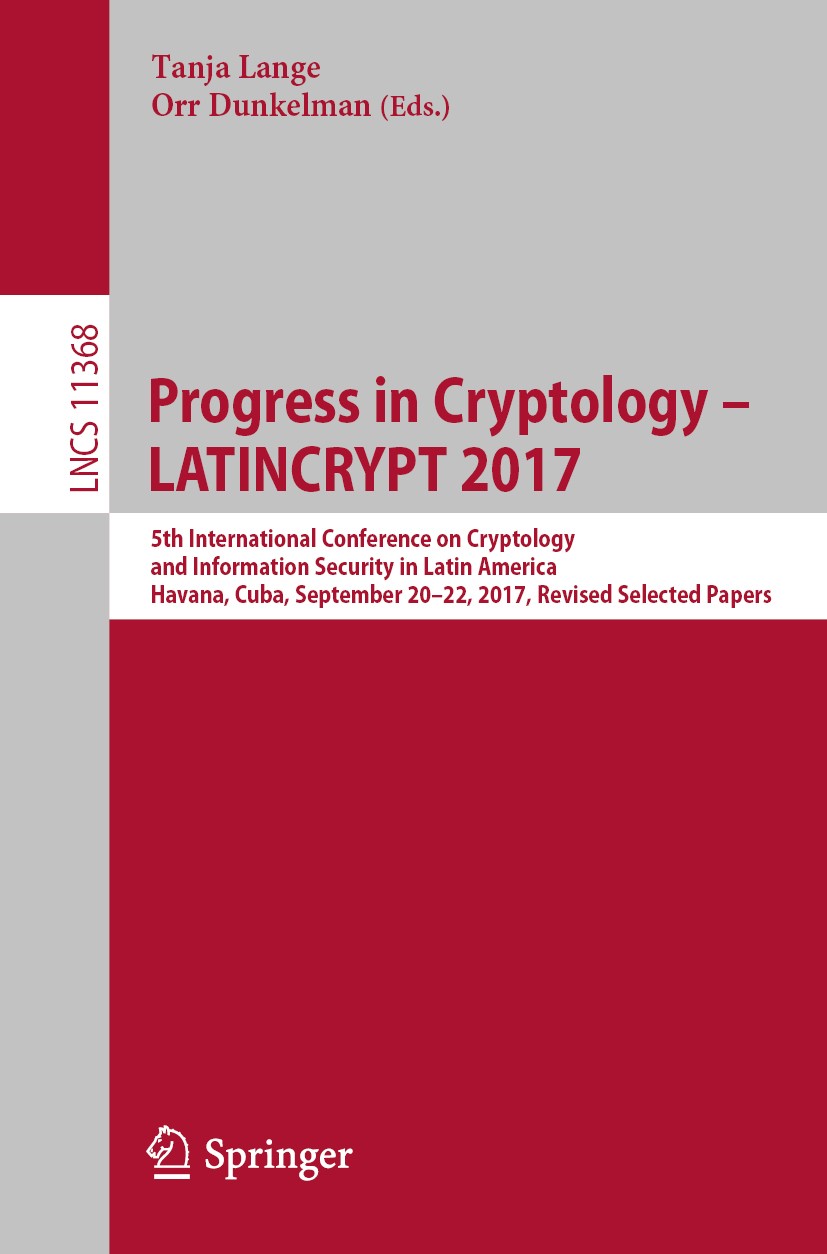| 书目名称 | Progress in Cryptology – LATINCRYPT 2017 |
| 副标题 | 5th International Co |
| 编辑 | Tanja Lange,Orr Dunkelman |
| 视频video | http://file.papertrans.cn/761/760404/760404.mp4 |
| 丛书名称 | Lecture Notes in Computer Science |
| 图书封面 |  |
| 描述 | .This book constitutes the refereed post-conference proceedings of the 5th International Conference on Cryptology and Information Security in Latin America, LATINCRYPT 2017, held in Havana, Cuba, in September 2017..The 20 papers presented were carefully reviewed and selected from 64 submissions. They are organized in the following topical sections: security protocols; public-key implementation; cryptanalysis; theory of symmetric-key cryptography; multiparty computation and privacy; new constructions; and adversarial cryptography.. |
| 出版日期 | Conference proceedings 2019 |
| 关键词 | authentication; computer architecture; computer crime; computer networks; computer science; cryptography; |
| 版次 | 1 |
| doi | https://doi.org/10.1007/978-3-030-25283-0 |
| isbn_softcover | 978-3-030-25282-3 |
| isbn_ebook | 978-3-030-25283-0Series ISSN 0302-9743 Series E-ISSN 1611-3349 |
| issn_series | 0302-9743 |
| copyright | Springer Nature Switzerland AG 2019 |
 |Archiver|手机版|小黑屋|
派博传思国际
( 京公网安备110108008328)
GMT+8, 2025-11-22 05:27
|Archiver|手机版|小黑屋|
派博传思国际
( 京公网安备110108008328)
GMT+8, 2025-11-22 05:27


